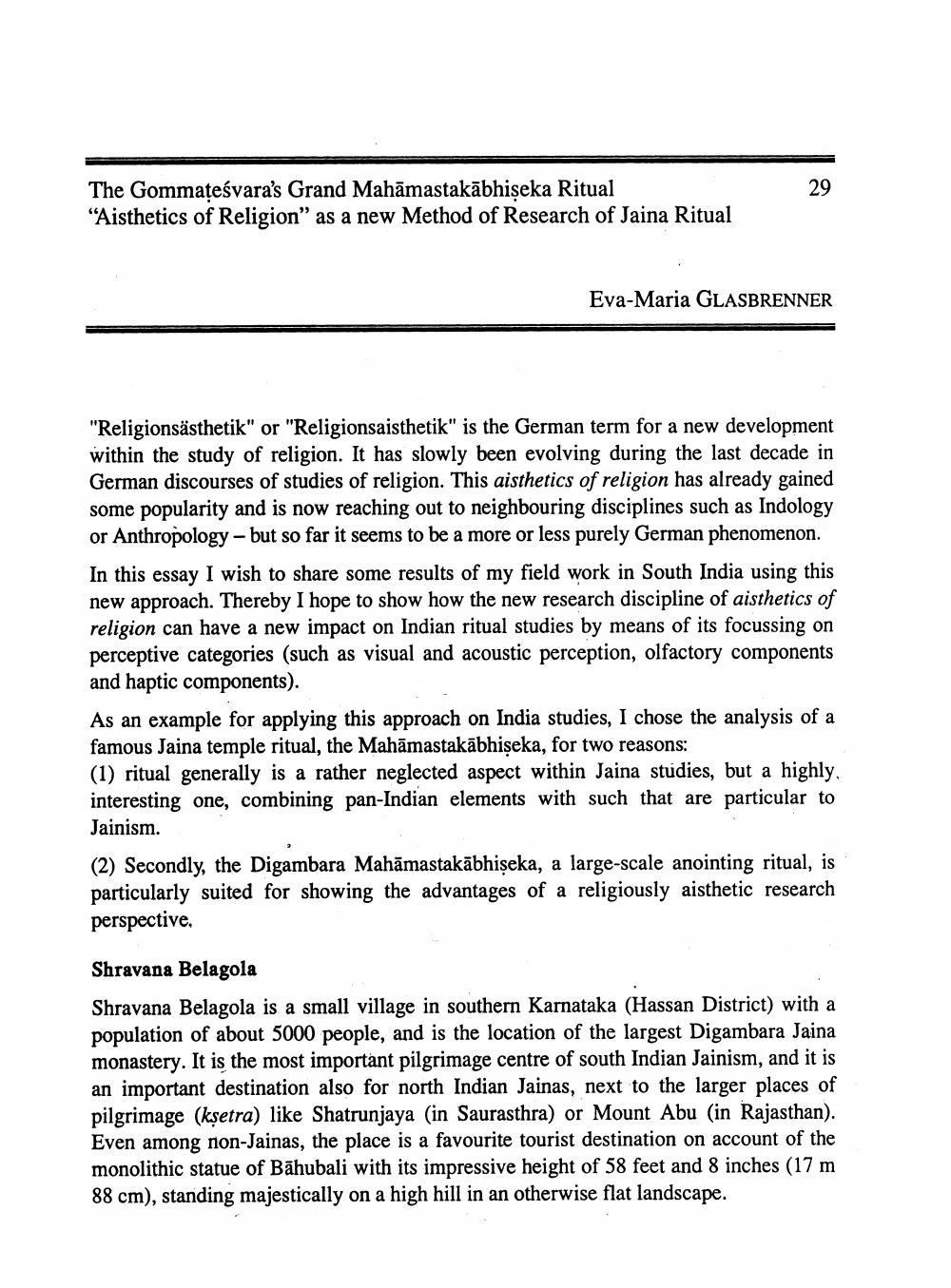________________
The Gommateśvara's Grand Mahāmastakābhiseka Ritual "Aisthetics of Religion" as a new Method of Research of Jaina Ritual
Eva-Maria GLASBRENNER
"Religionsästhetik" or "Religionsaisthetik" is the German term for a new development within the study of religion. It has slowly been evolving during the last decade in German discourses of studies of religion. This aisthetics of religion has already gained some popularity and is now reaching out to neighbouring disciplines such as Indology or Anthropology - but so far it seems to be a more or less purely German phenomenon. In this essay I wish to share some results of my field work in South India using this new approach. Thereby I hope to show how the new research discipline of aisthetics of religion can have a new impact on Indian ritual studies by means of its focussing on perceptive categories (such as visual and acoustic perception, olfactory components and haptic components). As an example for applying this approach on India studies, I chose the analysis of a famous Jaina temple ritual, the Mahāmastakābhișeka, for two reasons: (1) ritual generally is a rather neglected aspect within Jaina studies, but a highly interesting one, combining pan-Indian elements with such that are particular to Jainism. (2) Secondly, the Digambara Mahāmastakābhiseka, a large-scale anointing ritual, is particularly suited for showing the advantages of a religiously aisthetic research perspective.
Shravana Belagola Shravana Belagola is a small village in southern Karnataka (Hassan District) with a population of about 5000 people, and is the location of the largest Digambara Jaina monastery. It is the most important pilgrimage centre of south Indian Jainism, and it is an important destination also for north Indian Jainas, next to the larger place pilgrimage (ksetra) like Shatrunjaya (in Saurasthra) or Mount Abu (in Rajasthan). Even among non-Jainas, the place is a favourite tourist destination on account of the monolithic statue of Bāhubali with its impressive height of 58 feet and 8 inches (17 m 88 cm), standing majestically on a high hill in an otherwise flat landscape.




